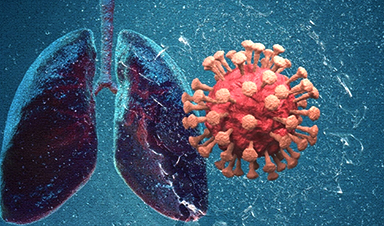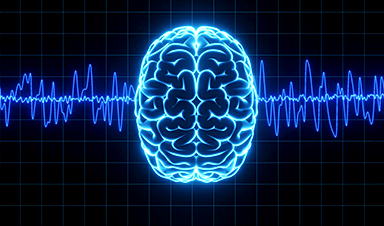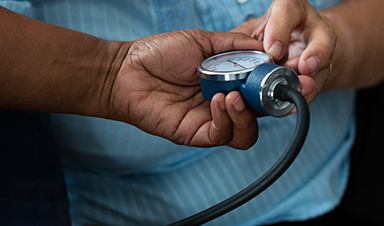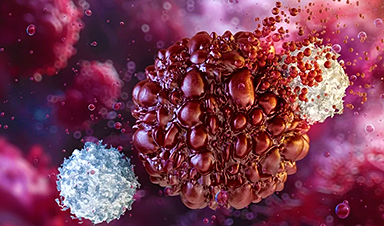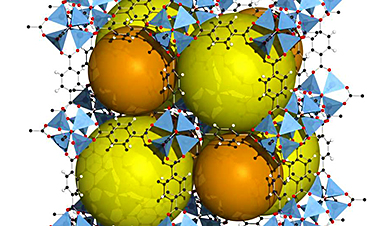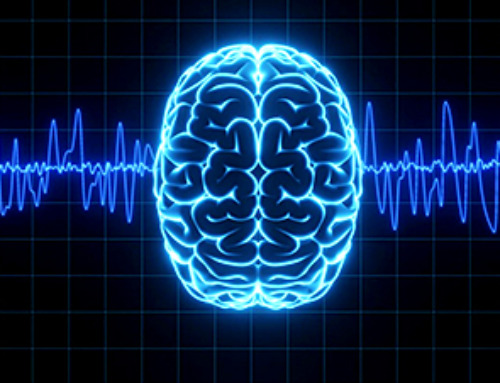The coronavirus disease 2019 (COVID-19) pandemic has caused several waves of infections in many world regions, so strong as to overwhelm local healthcare services. In this new situation, faced with an unknown virus, the need is to produce clinical guidelines that help recognize and manage critical COVID-19. Meanwhile, conditions such as chronic obstructive pulmonary disease (COPD) are linked to a markedly increased risk of death in community pneumonia.
A new preprint available on the bioRxiv* preprint server uses computational algorithms to tease out the interrelationships between these two conditions that cause similar outcomes. Based on protein-protein interactions (PPIs), the paper shows the presence of ten genes that overlap between the two illnesses, also shared by several other deadly and debilitating diseases.
The severe acute respiratory syndrome coronavirus 2 (SARS-CoV-2) spread worldwide and has led to approximately five million deaths so far. Older adults are by far the worst affected by COVID-19, with this illness accounting for 80% of all deaths in the 65-and-above age group.
Interestingly, this age group is also at the highest risk of COPD. In this condition, found in a tenth of people over 40 years, the airflow is limited, mostly caused by chronic bronchitis or emphysema. Many genetic and environmental factors play a part in the occurrence of this disease, including irritant chemical inhalation or smoking, though only about a fifth of smokers have COPD.
While COPD patients rarely acquire COVID-19, the risk of death is much higher than non-COPD patients. Accordingly, recent recommendations have been made to update the diagnostic and treatment protocols for COPD.
Independent of COVID-19, COPD is responsible for the third-largest number of deaths in the world. Considered a polygenic condition, it renders its victims susceptible to severe disease and death following the triggering of a cytokine storm by SARS-CoV-2 infection.
The latter causes symptoms only after about five days, with death, if it occurs, taking place at an average of 14 days later, depending on the patient’s age and immunity.
However, COPD is a treatable condition, if not curable, with current therapies able to maintain a high quality of life and keep the patient safe from other respiratory illnesses. When it coexists with COVID-19, the respiratory tract suffers because of the pre-existing lung injury. Thus, severe COVID-19 is fourfold more likely in such patients.
COPD patients have higher levels of the viral entry receptor, the angiotensin-converting enzyme 2 (ACE2), as do smokers.
What did the study show?
The researchers constructed a PPI network using available data on ~5,500 COVID-19 and 296 COPD gene expression profiles to elucidate the genes involved in such complicated conditions.
They first identified 248 overlapping genes, of which ten were found to be the top common genes. These are implicated in cell-cell communication and metabolism, development, the response to stimuli, and biological regulation. These genes are mostly also involved in pathways implicated in malaria, trypanosomiasis, and inflammatory bowel disease (IBD).
The Interleukin 10 (IL 10) gene is the first common gene, or the hub gene, expressing a regulatory cytokine that modulates the inflammatory response. It is markedly upregulated in associated with the cytokine storm in severe COVID-19 patients admitted to the intensive care unit (ICU).
It is, however, low in patients with COPD who have dramatic airway inflammation. IL-10 thus serves as a marker of disease severity and is useful for monitoring treatment.
The study similarly elucidates the role of Toll-like receptor 4 (TLR4), expressed by multiple immune cells and found to be required for the initiation of inflammatory responses. When it increases excessively, hyperinflammation may set in.
The TLRs are driven by the recognition of viral RNA or dsDNA intermediate forms (called pathogen-associated molecular patterns (PAMPs). These are formed from the viral genome and recognized by pattern recognition receptors, especially the TLRs, triggering further inflammatory antiviral cascades that eventually clear the virus.
TLR4 is found to have the highest PPI with the viral spike protein compared to other TLRs. SARS-CoV-2 is found to enhance the expression of interferon-stimulated genes (ISGs) in the respiratory tract. However, the higher levels of ISG expression can cause greater ACE2 expression as well. Research shows how lung surfactants block the infection by TLR4 binding and activation.
Other hub genes include the Tumor necrosis factor (TNF), a key inflammatory mediator that is elevated in acute inflammation due to viral infection, and chronic or systemic inflammation. High TNF levels are found in patients with COPD and patients with acute COVID-19 and COPD.
Fourthly, IL6 is a potent inflammatory cytokine, with multiple actions in the inflammatory cascade. It is produced by many cell types, including epithelial airway cells and alveolar macrophages. High IL6 levels are associated with worse lung function and an accelerated rate of deterioration and skeletal muscle weakness in COPD.
IL8, also known as CXCL8, is a mediator for neutrophil tracking and is implicated in inflammatory processes, notably after viral infections. Respiratory muscle weakness in patients with COPD is traceable in part to IL8 activity, with rises in the level of this cytokine during COPD exacerbations. High CXCL8 levels are suggested to be the cause of death in severe COVID-19.
IL4 is an activator of the JAK-STAT pathway that drives inflammation and mediates hyper-responsiveness of the airways, a key COPD element.
The seventh hub gene is ICAM1, an intercellular adhesion molecule that is overproduced during early inflammation, causing the premature release of neutrophils. This molecule is elevated in COPD patients. With moderate to severe COVID-19, ICAM1 levels are high and increasing but drop in convalescence.
This may mean that these molecules are markers of COVID-19 severity. Besides, they also trigger coagulation defects. The four intracellular binding sites for SARS-CoV-2 within human cells are highly expressed in COPD patients.
The eighth hub gene is interferon-gamma (IFN-γ). This is known to be a key risk gene for COVID-19 patients with lung disease. COPD patients have a more than five times higher risk of severe COVID-19
TLR2 is the ninth hub gene, associated with a decline in lung function and evidence of inflammation in sputum, indicating its role in COPD pathogenesis and exacerbation. It is also known to recognize SARS-CoV-2 particles and may be part of the infection-pulmonary embolism pathway.
The last of the hub genes is IL18, which is thought to be tied to the abnormal inflammatory pathways in COPD. Anti-IL 18 antibodies neutralize the damage and inflammation caused by COPD in preclinical models.
News
Yale Scientists Solve a Century-Old Brain Wave Mystery
Yale scientists traced gamma brain waves to thalamus-cortex interactions. The discovery could reveal how brain rhythms shape perception and disease. For more than a century, scientists have observed rhythmic waves of synchronized neuronal activity [...]
Can introducing peanuts early prevent allergies? Real-world data confirms it helps
New evidence from a large U.S. primary care network shows that early peanut introduction, endorsed in 2015 and 2017 guidelines, was followed by a marked decline in clinician-diagnosed peanut and overall food allergies among [...]
Nanoparticle blueprints reveal path to smarter medicines
Lipid nanoparticles (LNPs) are the delivery vehicles of modern medicine, carrying cancer drugs, gene therapies and vaccines into cells. Until recently, many scientists assumed that all LNPs followed more or less the same blueprint, [...]
How nanomedicine and AI are teaming up to tackle neurodegenerative diseases
When I first realized the scale of the challenge posed by neurodegenerative diseases, such as Alzheimer's, Parkinson's disease and amyotrophic lateral sclerosis (ALS), I felt simultaneously humbled and motivated. These disorders are not caused [...]
Self-Organizing Light Could Transform Computing and Communications
USC engineers have demonstrated a new kind of optical device that lets light organize its own route using the principles of thermodynamics. Instead of relying on switches or digital control, the light finds its own [...]
Groundbreaking New Way of Measuring Blood Pressure Could Save Thousands of Lives
A new method that improves the accuracy of interpreting blood pressure measurements taken at the ankle could be vital for individuals who are unable to have their blood pressure measured on the arm. A newly developed [...]
Scientist tackles key roadblock for AI in drug discovery
The drug development pipeline is a costly and lengthy process. Identifying high-quality "hit" compounds—those with high potency, selectivity, and favorable metabolic properties—at the earliest stages is important for reducing cost and accelerating the path [...]
Nanoplastics with environmental coatings can sneak past the skin’s defenses
Plastic is ubiquitous in the modern world, and it's notorious for taking a long time to completely break down in the environment - if it ever does. But even without breaking down completely, plastic [...]
Chernobyl scientists discover black fungus feeding on deadly radiation
It looks pretty sinister, but it might actually be incredibly helpful When reactor number four in Chernobyl exploded, it triggered the worst nuclear disaster in history, one which the surrounding area still has not [...]
Long COVID Is Taking A Silent Toll On Mental Health, Here’s What Experts Say
Months after recovering from COVID-19, many people continue to feel unwell. They speak of exhaustion that doesn’t fade, difficulty breathing, or an unsettling mental haze. What’s becoming increasingly clear is that recovery from the [...]
Study Delivers Cancer Drugs Directly to the Tumor Nucleus
A new peptide-based nanotube treatment sneaks chemo into drug-resistant cancer cells, providing a unique workaround to one of oncology’s toughest hurdles. CiQUS researchers have developed a novel molecular strategy that allows a chemotherapy drug to [...]
Scientists Begin $14.2 Million Project To Decode the Body’s “Hidden Sixth Sense”
An NIH-supported initiative seeks to unravel how the nervous system tracks and regulates the body’s internal organs. How does your brain recognize when it’s time to take a breath, when your blood pressure has [...]
Scientists Discover a New Form of Ice That Shouldn’t Exist
Researchers at the European XFEL and DESY are investigating unusual forms of ice that can exist at room temperature when subjected to extreme pressure. Ice comes in many forms, even when made of nothing but water [...]
Nobel-winning, tiny ‘sponge crystals’ with an astonishing amount of inner space
The 2025 Nobel Prize in chemistry was awarded to Richard Robson, Susumu Kitagawa and Omar Yaghi on Oct. 8, 2025, for the development of metal-organic frameworks, or MOFs, which are tunable crystal structures with extremely [...]
Harnessing Green-Synthesized Nanoparticles for Water Purification
A new review reveals how plant- and microbe-derived nanoparticles can power next-gen water disinfection, delivering cleaner, safer water without the environmental cost of traditional treatments. A recent review published in Nanomaterials highlights the potential of green-synthesized nanomaterials (GSNMs) in [...]
Brainstem damage found to be behind long-lasting effects of severe Covid-19
Damage to the brainstem - the brain's 'control center' - is behind long-lasting physical and psychiatric effects of severe Covid-19 infection, a study suggests. Using ultra-high-resolution scanners that can see the living brain in [...]
